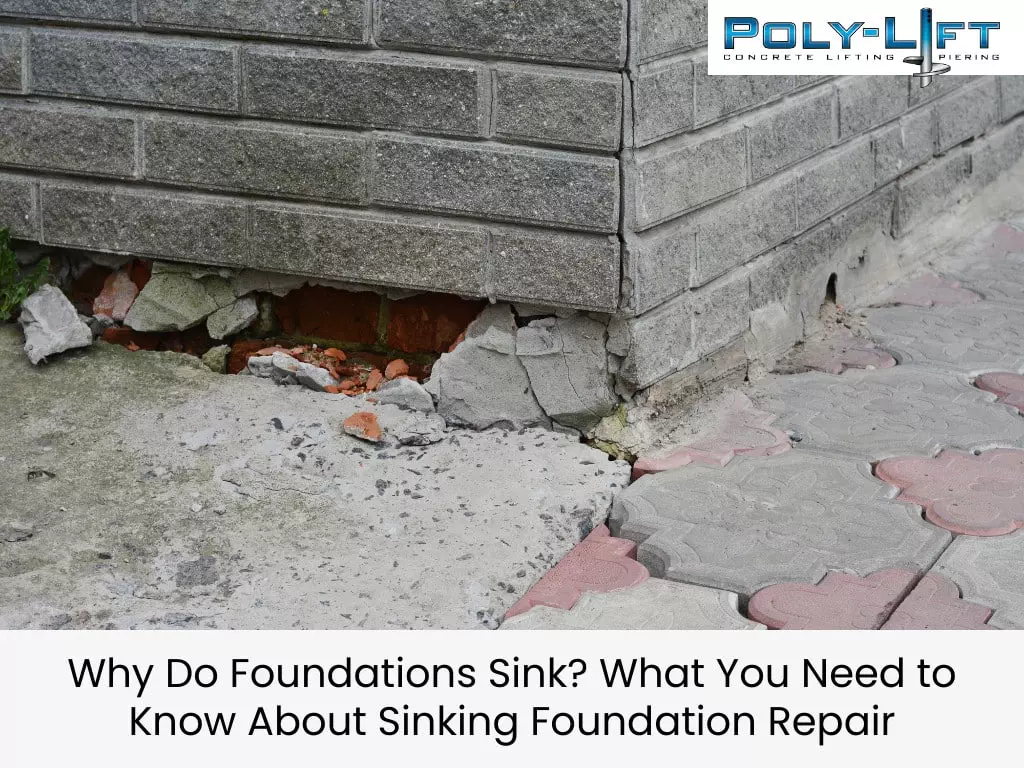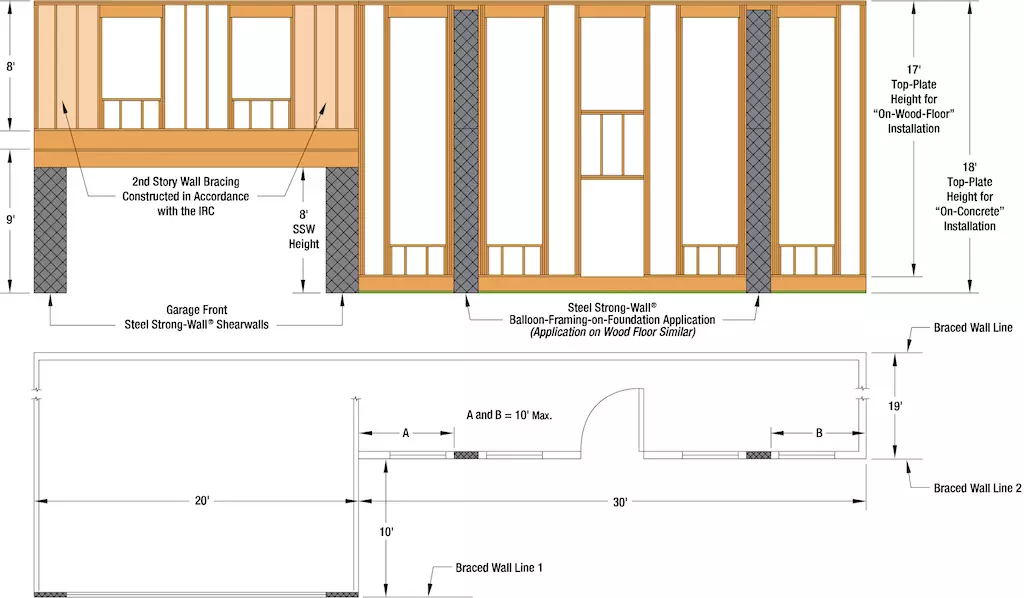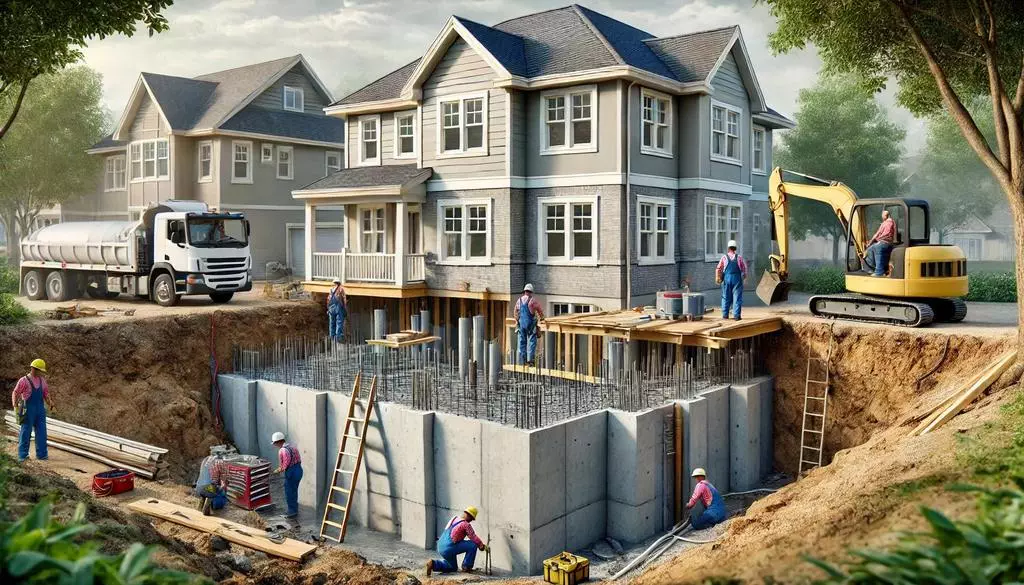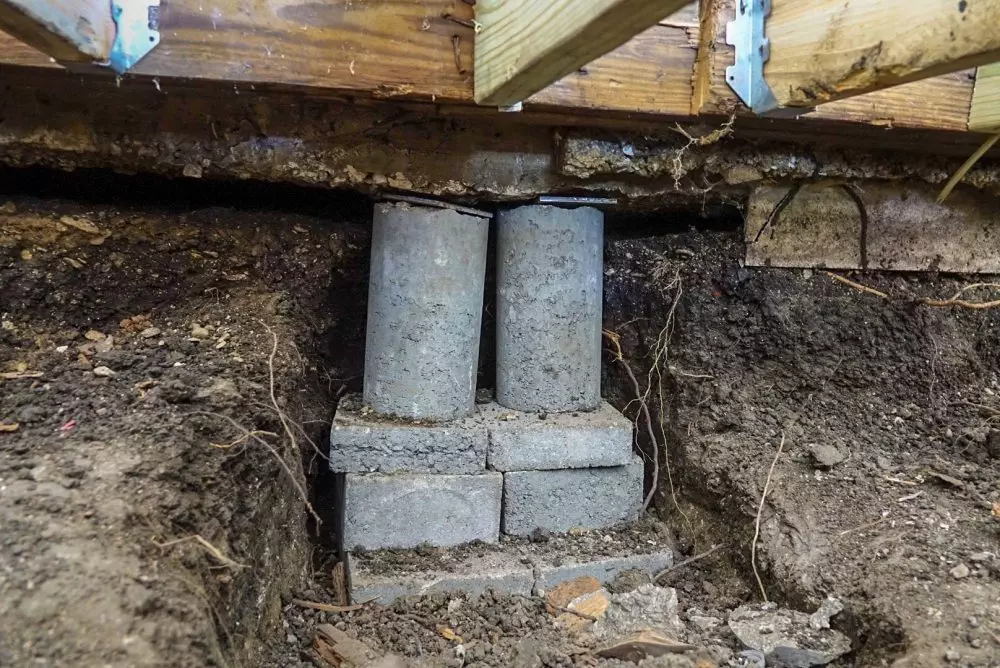
The Secret of Preventing Foundation Issues in 2025
“An ounce of prevention is worth a pound of cure.” When it comes to preventing foundation issues, this couldn’t be truer. You might think your home’s foundation is solid and unmovable, but several factors can lead to hidden problems. From understanding foundation drainage solutions to recognizing signs of foundation issues, there’s a lot you can do to protect your investment. Your home’s stability and value are on the line, and being proactive now can save you from costly repairs later.
Imagine noticing cracks creeping up your walls or doors that won’t close properly. These are not just annoyances; they are warnings of more serious problems lurking beneath your feet. By learning about foundation maintenance, you ensure your house remains a safe and secure environment. The good news? With advances in building science technology and proper construction practices, keeping your foundation in tip-top shape is attainable and simpler than ever.
Ready to discover how you can prevent foundation headaches and maintain your home’s structural integrity? Dive into the full article and start safeguarding your home’s future today!
Within the post
Understanding the Causes of Foundation Problems
To keep your home safe, it’s important to understand what can cause foundation problems. Many things can impact your foundation, but knowing the main reasons helps you take steps to protect it. Let’s dive into some common causes of foundation problems.
Poor Soil Conditions
One of the biggest culprits behind foundation issues is poor soil conditions. When soil is unstable, it can shift and settle unevenly. This movement puts stress on the foundation walls and can cause serious problems. You might notice that your walls start to crack or your floors become uneven.
Thankfully, there are ways to address this issue. Soil stabilization techniques can help keep the ground under your home stable. This may involve adding reinforcing materials like concrete or chemical treatments to the soil. By ensuring proper soil stabilization, you maintain the structural integrity of your foundation and prevent future issues.
Keeping an eye on soil conditions around your home is crucial. Regular checks ensure that any potential changes in the soil’s behavior are detected early. Monitoring these conditions helps you address issues before they escalate.
Inadequate Drainage
Another common cause of foundation issues is inadequate drainage. When water accumulates around your foundation, it can lead to serious problems. Water seeping into the ground can cause the soil to expand and put pressure on the foundation walls.
To combat this, it is essential to highlight effective foundation drainage solutions. These might include installing drainage systems like French drains or gutters that direct rainwater away from your house. Preventing water accumulation around your foundation is key to preserving its stability.
By improving drainage, you not only protect your foundation but also enhance the longevity of the entire structure. Well-planned drainage solutions ensure that water doesn’t become a problem for your home.
Signs of Foundation Issues to Watch For
Noticing early signs of foundation issues can save you a lot of trouble and expense. Catching problems early allows you to take timely action and avoid more severe damage down the road. Let’s look at some signs that indicate foundation issues.
Visible Cracks
One of the most apparent signs of foundation problems is visible cracks. These can appear in walls, ceilings, or floors. Sometimes, these cracks are harmless, but other times they might indicate a serious issue.
If you spot cracks in your walls or ceilings, pay attention to their size and direction. Cracks that are wider than a quarter of an inch or are stair-step shaped might signal trouble. Acting promptly to prevent further damage is crucial when you notice these issues.
Uneven Floors
Uneven or sloping floors are another indicator of potential foundation problems. You might notice that furniture doesn’t sit level, or you feel like you’re walking uphill in certain areas of your home.
Investigating these signs can help you understand potential causes. It could be due to soil movement, or it might be the result of past construction practices. Addressing the underlying cause ensures that the problem doesn’t worsen.
Doors and Windows
Sticking doors and windows can also point to foundation issues. When your foundation shifts, it can impact the alignment of your doors and windows. You might find them difficult to open or close.
Checking for alignment problems is important. You can use simple tools to measure gaps and figure out if your doors or windows are moving out of place. Alignment problems often reveal underlying issues with the foundation that need attention.
Separation Gaps
Another sign to look for is separation gaps. These can appear between walls, ceilings, or even between the foundation and the main structure. Gaps can indicate that parts of your home are moving apart.
It’s important to investigate these gaps. Sometimes, they can signal that your foundation is settling unevenly. Understanding what causes these gaps helps you take appropriate action to address the issue.
Water Seepage
Water seepage is an indicator that something isn’t right. If you notice water pooling or damp spots in your basement, it could be a sign of foundation problems. Water can enter through cracks and cause more damage.
Addressing water seepage promptly is essential. It can prevent further issues such as mold growth or additional foundation cracks. Finding solutions to keep water out helps protect your home.
Foundation Inspection and Maintenance
Regular Inspections
To ensure your foundation remains in good condition, schedule regular inspections. These checks help you identify issues early and address them before they become severe. Aim to have a professional inspect your foundation at least once a year.
During these inspections, experts will look for signs of trouble, such as cracks or drainage problems. Early identification of problems allows you to take timely action, saving you from costly repairs in the future.
Routine Maintenance
In addition to inspections, implementing foundation maintenance practices is vital. Routine maintenance keeps your foundation strong and prevents potential issues. Simple tasks can go a long way in ensuring ongoing integrity.
- Check for cracks in walls and floors.
- Inspect drainage systems to ensure proper function.
- Validate soil stability to prevent settlement.
Regular maintenance helps avoid major repairs. By staying proactive, you protect your home’s foundation and ensure its longevity.
Foundation Waterproofing Techniques
Water is one of the biggest threats to your foundation. Protecting against moisture damage is crucial in maintaining its integrity. Let’s explore some foundation waterproofing techniques.
Exterior Barrier Systems
Exterior barriers are a great way to keep water out. These systems involve applying waterproofing materials to the outside of your foundation. Sealants and membranes create barriers that prevent water from seeping in.
By using these materials, you reduce the risk of water damage. Exterior barrier systems provide an effective first line of defense against moisture.
Interior Waterproofing Options
In addition to exterior solutions, there are interior waterproofing options. These methods focus on stopping water from entering your home once it has penetrated the foundation surface.
Interior coatings and barriers are popular choices. They prevent water from reaching living spaces and causing damage. Using a combination of exterior and interior methods ensures comprehensive protection.
Implementing Drainage Solutions
Effective drainage is also crucial for waterproofing. It involves utilizing techniques that direct water away from the foundation. This might include installing French drains or other systems.
Preventing water access to your foundation keeps it safe from damage. By implementing proper drainage solutions, you maintain its stability and prolong its life.
The Role of Soil Stabilization in Preventing Foundation Issues
Using soil stabilization techniques helps in preventing foundation issues. When you strengthen the soil under your home, you create a solid base that supports the foundation.
Techniques for Soil Stabilization
There are several methods for soil stabilization. You might explore techniques like compaction or adding stabilizing chemicals to the soil. These methods ensure that the ground remains firm and stable.
Ensuring long-term stability through soil stabilization reduces the risk of foundation settlement. By addressing potential issues with the soil, you safeguard your home’s foundation.
Monitoring Soil Movement
Keeping track of soil shifts is important for prevention. As the soil moves, it can impact your foundation. Monitoring these changes helps you adjust strategies as needed.
By staying vigilant, you protect your foundation. Regular checks and adjustments prevent small problems from becoming significant issues.
When to Consider Foundation Repair
Evaluating Repair Needs
Foundation repair is sometimes necessary to address serious issues. Evaluating the need for repairs involves looking at the condition of your foundation and deciding when action is required.
Prioritizing foundation repair timely is crucial. Neglecting necessary repairs can lead to more problems and higher costs down the line.
Choosing Repair Methods
When it comes to repairing your foundation, selecting the right method is important. Consult professionals to determine the best solutions for your situation.
Experts can provide guidance on options like underpinning or piering. By choosing the appropriate methods, you address the root causes of the problem and ensure a lasting fix.
Tips for Maintaining Structural Integrity
Maintaining the structural integrity of your home is essential for its safety and longevity. There are several steps you can take to keep your foundation strong.
Routine Checks
Performing regular structural checks helps you catch issues early. By inspecting your foundation periodically, you ensure its stability and safety.
Make it a habit to look for signs such as cracks, gaps, or uneven areas. Addressing small issues before they escalate keeps your foundation in top condition.
Immediate Repairs
If you notice problems, fix them without delay. Timely repairs protect your home investment and prevent further damage.
Whether it’s a small crack or a sticking door, addressing issues promptly saves you from bigger problems in the future.
Professional Consultation
Don’t hesitate to seek expert advice when needed. Consult professionals routinely to benefit from their knowledge and expertise.
Professionals can provide insights into foundation care and suggest the best approaches to maintain your foundation’s integrity.
Water Management
Managing water is crucial for preventing foundation issues. Implementing systems like gutters and drains directs water away from your home.
By keeping water under control, you protect your foundation from moisture damage. Regularly checking these systems ensures they work effectively.
Wrapping Up Your Foundation Journey
Understanding how to keep your home’s foundation strong is crucial. By learning about regular maintenance, recognizing warning signs, and addressing issues early, you can keep costly repairs at bay. These efforts safeguard the stability and longevity of your home, giving you peace of mind and ensuring a safe and comfortable living space.
Now, take proactive steps to protect your home. Begin by scheduling a foundation inspection with a qualified professional. This provides you with a clear picture of any current or potential issues. Additionally, consider implementing effective drainage solutions and checking for water leaks around your property. These actions are simple but can make a world of difference.
Don’t delay-start implementing these measures today. Protect your investment and enjoy the long-term benefits of a stable home foundation. If you need more guidance, connect with local experts who can offer personalized advice. Make these steps a priority and successfully fortify your home for the future.







